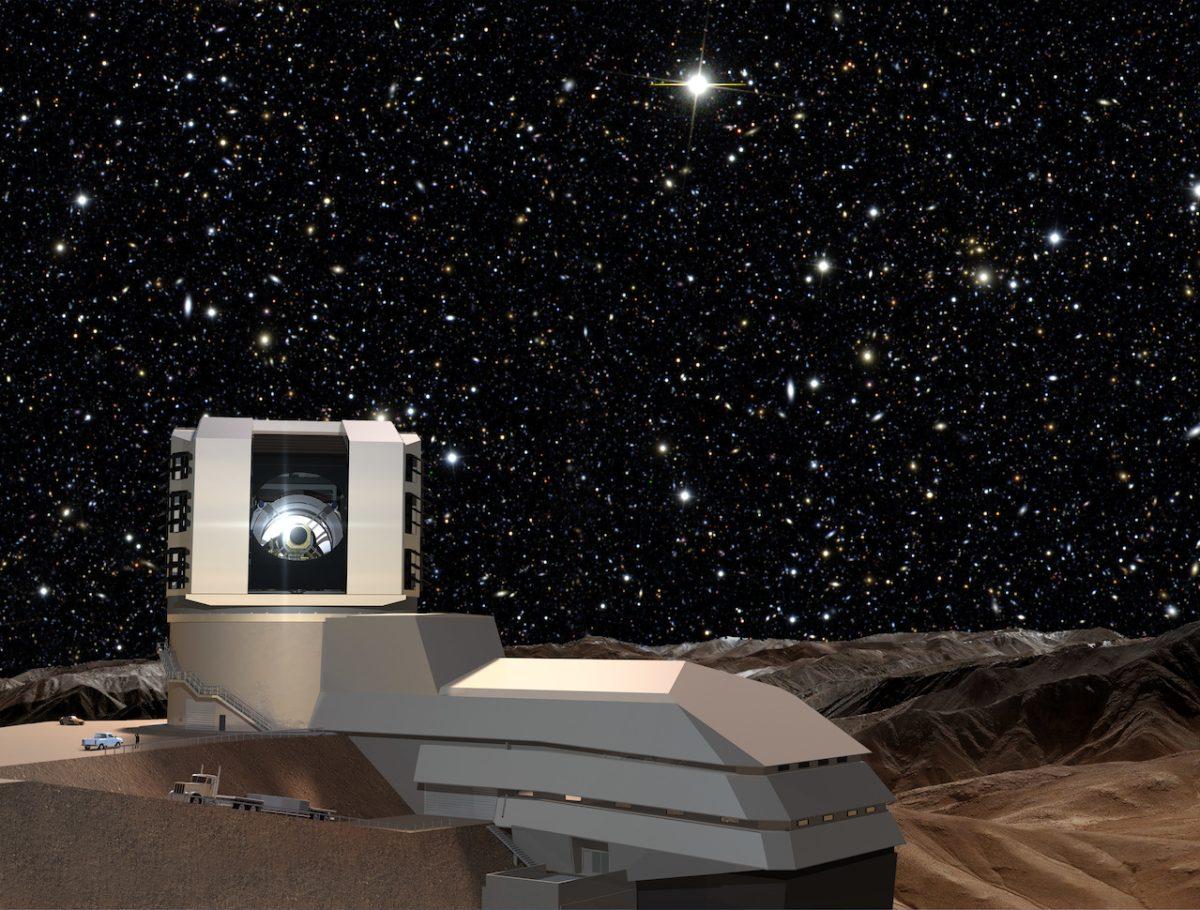The ability to finally be able to analyze and learn more about dark matter and dark energy is just around the corner thanks the innovative Large Synoptic Survey Telescope, or LSST. It is being developed by an international team made of over thousands of people, including three professors at Texas A&M.
The LSST is a groundbreaking telescope which will develop a digital picture of the entire sky continuously over a three-night period. The project is funded by the National Science Foundation and the Department of Energy, according to Lucas Macri, institutional board representative of the LSST. The LSST is aimed to become operational as soon as 2022. This project wasn’t feasible fifteen years ago, but the LSST will bring in all sorts of new data about the universe around us, according to Macri.
“Imagine if our only knowledge of biology was one picture of a cell that you took once,” Macri said. “The nice thing about a microscope … is you can actually see a cell … that dynamic and that temporal coverage, of in this case, a cell, gives you a lot of information and it is the same thing with the sky. We’ve been able to study small patches of the sky repeatedly. Many pictures of them see things that change, discover new stars, exploding stars, asteroid, whatever. But we have never been able to do an unbiased complete survey of the sky.”
The LSST is able to do this using a charged couple device that is sensitive to light. It also requires a large mirror to be cast, and a lot glass melted into the right shape. The LSST has two mirrors in one shape which collect in a flight with enough quality so that eventually one can make these pictures of the sky, according to Macri.
“The telescope was able to be designed to look at a large part of the sky,” Nicholas Suntzeff, university distinguished professor and head of the TAMU Astronomy Group said. “The digital detector for the LSST is the size of [a] table. Imagine covering [a] table with silicon chips and cramming them all together. And so every image you take with this telescope is the size of [a] table and you’re taking images every twenty seconds all night long. So this is an unbelievable size of an image of a focal plane. And compare that with the camera that’s being built for the LSST and so that’s what [a] table is, it’s the size of the image. As a person whose built instruments that just blows my mind that we’re able to do something like that.”
This flood of new information about the entire universe can be utilized to further understand dark matter and dark energy. With the development of the LSST, astronomers can learn more about dark matter and energy than was ever possible before. They will also be able to better understand transient objects, according to Suntzeff.
“This telescope will be the first big telescope to devote itself to searching for what we call in astronomy the transient sky,” Suntzeff said. “Stars that vary get brighter and fainter. Stars that explode. Galaxies that get brighter and fainter. Black holes that rip apart stars. Gamma Ray explosions at the edge of the universe. And we’ll discover things that we can’t even imagine right now. That’s one of the beauties of astronomy.
Every time a telescope is built, that opens up a new way of looking at the universe, Suntzeff said.
“We anticipate cool things to discover that ultimately what was really exciting was to discover things that we had no idea existed,” Suntzeff said. “So, in this case we’re opening up the transient sky and we will find things beyond our imaginations.”
The LSST will also be able to help predict if an asteroid is projected to hit the earth, according to Macri. Macri said if an asteroid the size of Kyle Field hit the earth, the impact wouldn’t be the problem, but the amount of dust would eventually black out the whole earth.
The LSST is currently being developed as a worldwide project. The LSST headquarters are in Tuscon, Arizona. Astronomers at Stanford University are developing the camera, which will be the largest digital camera ever assembled. The telescope itself is being built in Chile.
Suntzeff, who picked the mountain in Chile on which to build the telescope, was actually one of the first people involved with the project approximately twenty years ago. According to Suntzeff, the LSST has brought together the astronomy and statistics departments.
“It’s unbelievable how much data is going to come from this telescope,” Suntzeff said. “And in order to sift through the data we can’t just be normal astronomers. We have to use advanced mathematical and statistical techniques. So we’ve begun a program in collaboration with the statistics department in studying something that’s called astrostatistics. And astrostatistics will allow us to have tools to allow us to search very large databases for objects of interest.”
Currently, these TAMU professors are preparing their graduate students for what is to come in the next few years with the completion of the LSST.
“Well I am preparing for some software I was thinking about getting students to work LSST related problems in particular to identify objects that may be interesting to us,” said Lifan Wang, professor in physics and astronomy at TAMU and member of the LSST dark energy science collaboration.
A&M professors help develop new telescope
December 4, 2017
Photo by Provided
The LSST Facility will change how astronomers study the sky by providing a new method of examination.
0
Donate to The Battalion
Your donation will support the student journalists of Texas A&M University - College Station. Your contribution will allow us to purchase equipment and cover our annual website hosting costs.
More to Discover








